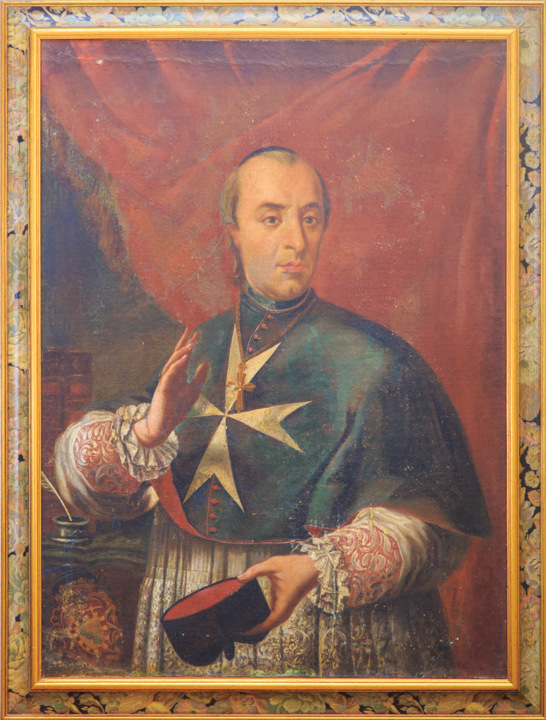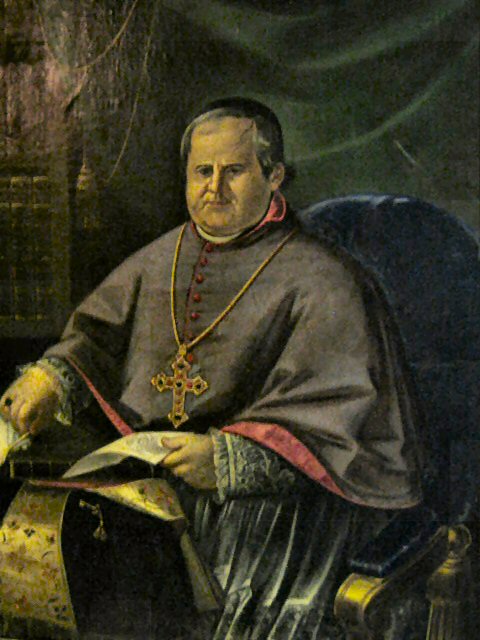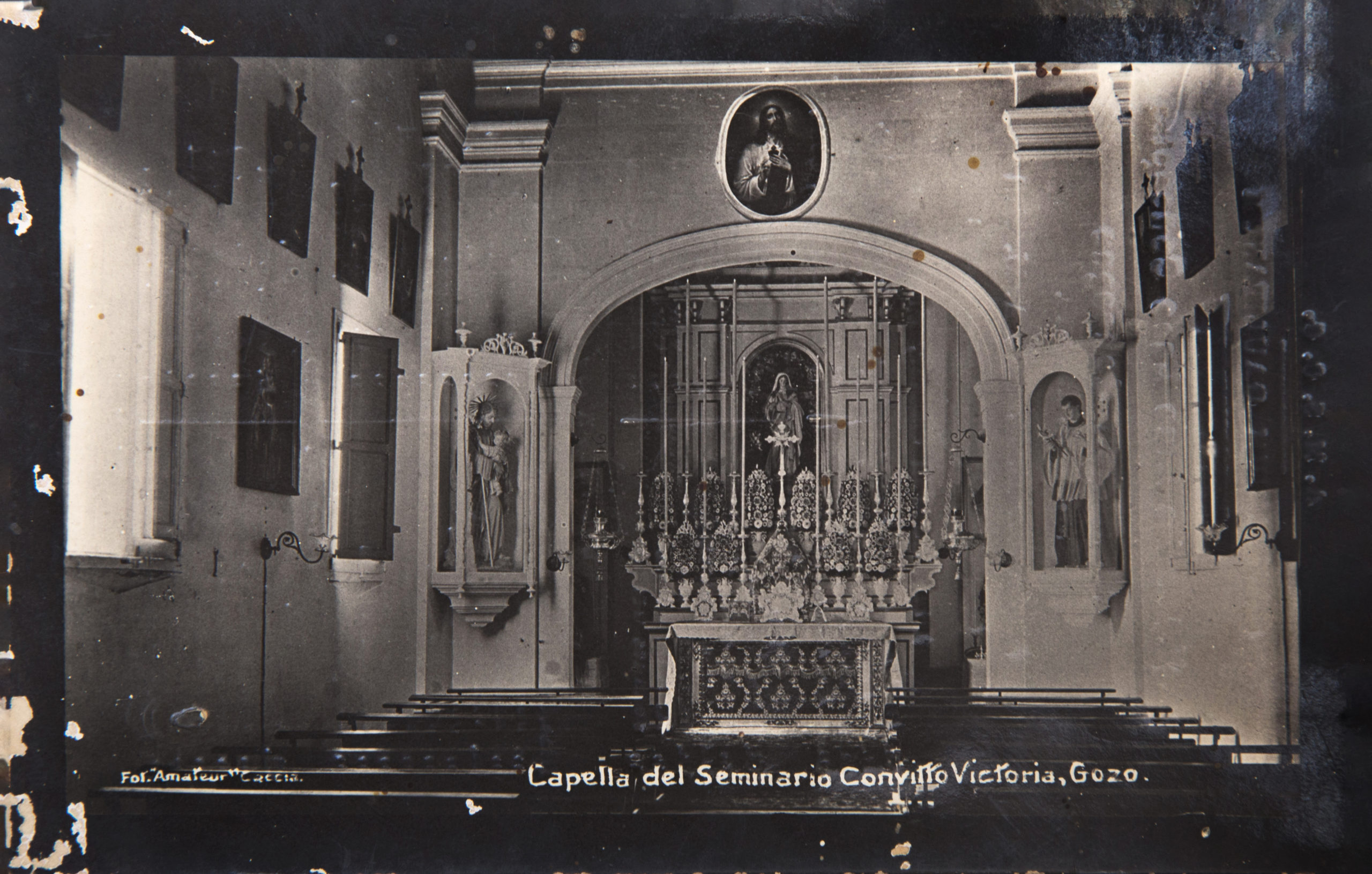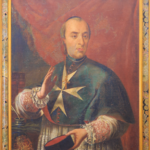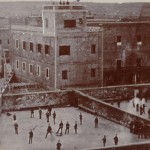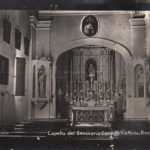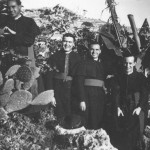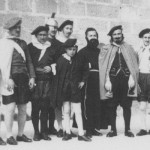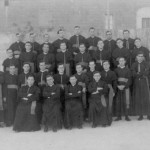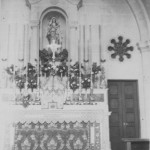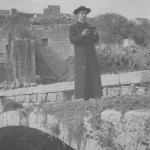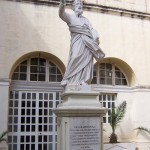The building that now houses the Seminary knows its origin to the munificence of several persons who in 1778 decided to erect a new hospital for women in the island of Gozo. The former Saint Julian Hospital, founded within iċ-Ċittadella in 1454, was proving itself too small. The venture was made possible through a generous donation of Fra Melchior Alpheran, Grand Prior of the Conventual Church of Saint John, and through bequests of the Reverend Joseph Agius and his sister Rose Pluman. The encouragement and support of Vincenzo Labini, Bishop of Malta and Gozo, knew no bounds – he promised to meet one third of all costs. Their portraits still hang in the Seminary corridors.
Bishop Labini laid and blessed the foundation stone on 3 May 1783. Work progressed briskly under the direction of Don Ġannmarija Cauchi and, due especially to the voluntary work by many Gozitans the new St Julian Hospital was soon able to receive the first patients. It consisted of two halls of a letter L and had a capacity for fifty beds. Some beds were reserved for incurables and there was a maternity corner for unwed mothers. In 1838, its scope was greatly reduced as the Saint John the Baptist Hospital for males, situated across the street from St Julian Hospital (the present complex of the Ministry for Gozo), opened its doors for females.
On 16 September 1864, Pope Blessed Pius IX, had through the Bull Singulari Amore established the diocese of Gozo and Comino. It had,among other things, stipulated that the diocese open its own seminary and indicated the former hospital as its venue. It was the promoters of the Diocese who had earmarked the building for this noble scope, a suggestion that was endorsed by the Holy See. Mgr Francesco Buttigieg, the first bishop of Gozo, ordered the implementation of this demand. The St Julian Hospital closed down on 30 November 1864.
Monsignor Pietro Pace, the Vicar General and the chief promoter of the Diocese, engaged a Roman architect to prepare a plan for its conversion. Through the efforts of the indefatigable Pace, its conversion soon got under way. On 28 May 1865, Bishop Buttigieg requested Pierre-Jean Beckx, Superior General of the Society of Jesus, to permit the Sicilian Jesuits to take over the direction and running of the new seminary. He graciously accepted and, on 11 September 1866, three Jesuits arrived from Sicily to assume the responsibility of the new seminary: Fr Antonio Tommasi sj, who was to be the first Rector, Fr Salvatore di Pietro sj, the first Minister and master of Mathematics and Physics, and Brother Antonio Ardagna sj.
Bishop Buttigieg, who had worked so hard to set this new venture on a stable and solid basis, unfortunately died the previous July and the official opening was delayed until the election of his successor. The inauguration eventually took place on 4 November 1866, in the afternoon. The ceremony was presided over by Bishop Paolo Micallef oesa, Apostolic Administrator for Gozo, and Fr Pietro Fontana sj, Provincial of the Province of Sicily of the Society of Jesus. Mgr Pietro Pace, the Vicar General and, later, Bishop of Gozo (1877-89) and Archbishop of Malta (1889-1914) delivered the inauguration address. In remembrance of the inauguration three marble coats-of-arms were eventually placed over the entrance of the Seminario del Gozo: that of Pope Pius IX flanked by those of Bishop Labini on theleft and Bishop Buttigieg on the right. The previous 15 September, Pace had blessed the new Seminary chapel, initially dedicated to St Julian, but, since 8 December 1866, rededicated to the Immaculate Conception. On that day, Fr Salvatore Spinelli sj, the spiritual director, founded the Marian Congregation with sixteen members.
The Jesuits did much to enhance the standard of education at the Seminary and, indeed, its reputation spread far and wide. So much so that, from the very beginning, not only the sons of the best families in Gozo, but also many intellectually talented boys from Malta and even from Sicily, attended the Jesuit-run Seminary. In the Minor Seminary, boys were prepared for the University of Malta Matriculation Examination and many were those who obtained brilliant results. The Major Seminary made a very good name for itself for the quality and high standard of its studies and for the number of holy and zealous priests it turned out.
On 24 June 1881, during the rectorship of Fr Vincenzo Deccoradi sj, the Seminary was solemnly consecrated to the Sacred Heart of Jesus, and henceforth named Seminarium Gaudisiense SS. Cordis. The Seminary soon entered the international scene. On 1 November 1882, Bishop Pietro Pace inaugurated a Meteorological Observatory atop the highest point of the Seminary. This was immediately affiliated as the 170th station of the Rete Meteorologica Italiana. The reports of the station, that operated until 1909, were from 1885 published in the Summary and Review of International Meteorological Observations printed monthly by the War Department of Washington dc.
The Seminary had in the meantime became the centre of many ecclesiastical and cultural activities of the diocese. The Jesuits held meetings for priests, gave public lectures and talks, held religious activities, and produced dramatic shows for the families of seminarians and people at large, many of whom came even from Malta.
Owing to administrative difficulties, as well as to shortness of personnel, the Sicilian Jesuits left the Seminary on 9 August 1909. Bishop Giovanni-Maria Camilleri, fourth bishop of Gozo, handed over its running to diocesan priests. In the initial months, the Rector was an Italian priest but, since 1910 most of the rectors were Gozitans. Between 1970 and 1997, the Sacred Heart Seminary, as it is now known, was again directed by a Jesuit priest.
The Seminary, under the guidance of Mgr Anton Teuma, the ninth bishop of Gozo, still enjoys to a great extent the good name it originally achieved. The immense influence that it had in the educational and cultural fields in Gozo and beyond cannot be denied particularly when one realizes that for a long time it was practically the only secondary school in Gozo and that a vast number of priests, men of profession, civil servants and businessmen, from both Gozo and Malta, owe their secondary education to the Seminary.
By a decree of 13 April 1994, the Congregation for Catholic Education affiliated the Seminary to the Pontifical University of Saint Thomas in Rome, and the seminarians who successfully complete the course of Philosophy and Theology are conferred with the degree of Baccalaureate in Sacred Theology by the University.
Around 650 Gozo-born priests and and a number from Malta owe their training to the Sacred Heart Seminary. Among its ex-alunni, the Gozo Seminary is proud to number seven bishops, three former Presidents of the Republic of Malta, a Prime Minister, and four Chief Justices.

